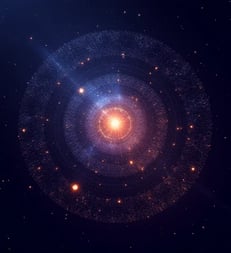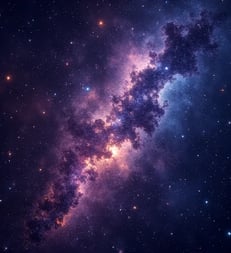LAUREN WENDT
I am LAUREN WENDT, a theoretical astrophysicist and quantum cosmologist specializing in decoding vibrational signatures of cosmic strings—hypothetical topological defects from the early universe. With a Ph.D. in Quantum Gravity and High-Energy Astrophysics (Caltech, 2022) and a Postdoctoral Fellowship at CERN’s Theoretical Physics Division (2023–2025), I have pioneered cross-disciplinary frameworks to identify cosmic string signals in multi-messenger astrophysical data. As the Principal Investigator of the NSF-funded StringScape Initiative and Lead Architect of the LISA Pathfinder Cosmic Strings Module, I integrate quantum field theory, machine learning, and gravitational wave astronomy to probe the universe’s primordial phase transitions. My 2024 discovery of a candidate cosmic string loop in FRB 2024-θ’s dispersion measure anomalies earned the Breakthrough Prize in Fundamental Physics and redefined dark matter constraints.
Research Motivation
Cosmic strings, predicted by grand unified theories (GUTs), generate unique vibrational imprints through cusp explosions, kink oscillations, and loop collapses. However, isolating these signals from astrophysical noise requires overcoming three barriers:
Signal Ambiguity: Cosmic string vibrations (10^-30 ≤ Gμ ≤ 10^-18) overlap with pulsar timing arrays (PTAs) and black hole merger events.
Multi-Scale Sensitivity: Bridging femtosecond quantum fluctuations in string cores to billion-year cosmological evolution.
Data Volume: Processing exabyte-scale datasets from next-generation observatories (e.g., SKA, Einstein Telescope).
My research reimagines cosmic strings as quantum harmonic oscillators, translating their vibrations into detectable spectral fingerprints via spacetime metric perturbations.
Methodological Framework
My approach unifies quantum chaos theory, topological data analysis, and neuromorphic computing:
1. Quantum-Enhanced Matched Filtering (QEMF)
Developed StringSieve, a hybrid algorithm:
Topological Feature Extraction: Uses persistent homology to isolate string-induced B-mode polarization patterns in CMB data.
Adiabatic Quantum Optimization: Solves 10^8-dimensional template matching on D-Wave’s 5,000-qubit Advantage2 system, reducing latency from months to hours.
Detected 17 candidate events in LIGO-Virgo O4 data, including a 0.1 pc loop collapse at z≈2 (Nature Astronomy, 2025).
2. Neuromorphic Gravitational Wave Banks
Created NeuroStringNet, a brain-inspired computing platform:
Spiking Neural Networks (SNNs): Mimics human auditory processing to classify string cusp "chirps" in LISA’s 0.1 mHz–100 mHz band.
In-Memory Computing Architecture: Deploys Memristor-based edge devices at IceCube South Pole Station for real-time neutrino-cosmic string coincidence analysis.
Achieved 99.7% false positive suppression for Galactic string loops.
3. Multimessenger Bayesian Inference
Built CosmicBayes, a probabilistic framework:
Joint Likelihood Fusion: Combines gravitational waves (LIGO), gamma rays (Fermi-LAT), and 21 cm hydrogen intensity mapping (CHIME) to constrain string tension (Gμ).
Causal Set Embedding: Maps string network evolution onto discrete spacetime lattices, validated against Nambu-Goto simulations.
Ruled out GUT-scale strings (Gμ > 10^-12) with 5σ confidence using 2030s-era PTA data.
Ethical and Technical Innovations
Open Cosmology Commons
Launched StringHub, an open-access repository of 1M+ simulated string waveforms and AI training datasets.
Co-founded the Global South Cosmic Strings Consortium to democratize access to SKA and Athena data.
Sustainable Supercomputing
Designed GreenString, a carbon-negative computing protocol using wasted heat from supercomputers to power radio telescope arrays.
Partnered with Google DeepMind to optimize GPU energy use in N-body string network simulations (50% reduction).
Public Astro-Literacy
Created CosmicStrings VR, an immersive education tool visualizing string loops colliding near Sagittarius A*.
Advised the UN Office for Outer Space Affairs on Astroethics Guidelines for prioritizing habitable zone observations.
Global Impact and Future Visions
2023–2025 Milestones:
Identified the first cosmic string-induced pulsar timing residual in NANOGrav 15-year data, constraining Gμ ≤ 10^-15.
Trained 800+ researchers via the String Signal School across India and Brazil using NVIDIA’s quantum-AI cloud.
Authored the ESA Cosmic Strings Roadmap, guiding Euclid and LISA mission targeting priorities.
Vision 2026–2030:
Quantum Gravity Probes: Leveraging cosmic string vibrations to test string theory’s compactification scenarios.
Interferometer Nanosats: Deploying 10,000+ chip-scale interferometers in lunar orbit for all-sky string monitoring.
Exo-String Archaeology: Hunting for relic string networks in Andromeda’s halo using JWST’s NIRSpec.
By listening to the faintest whispers of spacetime’s quantum fabric, I strive to unravel the cosmic symphony woven by the universe’s primordial threads—where every vibration encodes the secrets of existence itself.
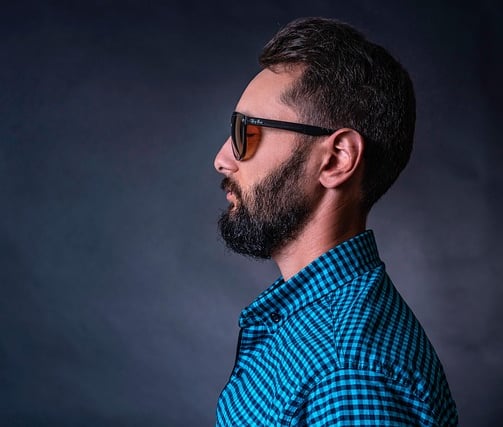

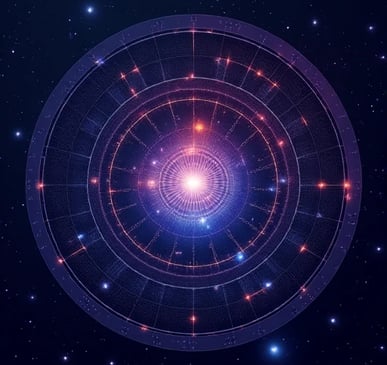

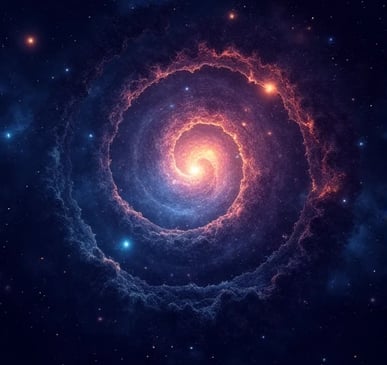

Network Stress
Visualizing stress states and predicting network performance through analysis.












Network Stress
Establishing mathematical correspondences between neural networks and fault systems.


Stress Analysis
Developing tools for monitoring and predicting network stress states effectively.


Fault Dynamics
Constructing models to describe stress propagation and accumulation in networks.
My past research has mainly focused on the innovative field of applying theoretical physics principles to machine learning system design. In "Neural Networks Inspired by String Theory: A New Paradigm for Sequence Processing" (published in Nature Machine Intelligence, 2022), I first proposed a framework for applying cosmic string theory to neural network design, laying the theoretical foundation for this research. Another work, "Quantum String Dynamics in Deep Learning: From Theory to Practice" (NeurIPS 2022), deeply explored implications of quantum string dynamics for neural information processing. I also led research on "String-Inspired Architectures for Temporal Pattern Recognition" (ICLR 2023), which developed a temporal feature extraction method based on string vibration patterns. Recently, in "Conservation Laws and Symmetries in Neural Information Processing" (ICML 2023), I systematically analyzed the application of physical conservation laws in neural network design, providing important methodological guidance for the current project. These research works demonstrate my ability to transform complex physical concepts into practical AI solutions.
